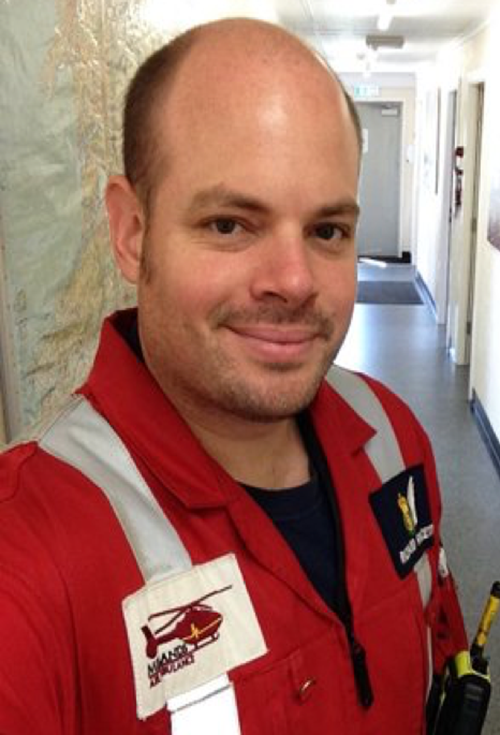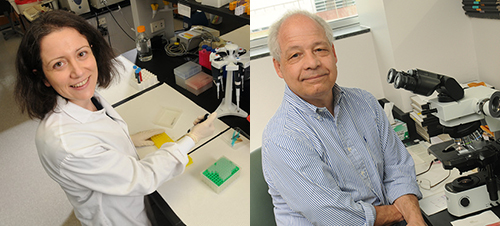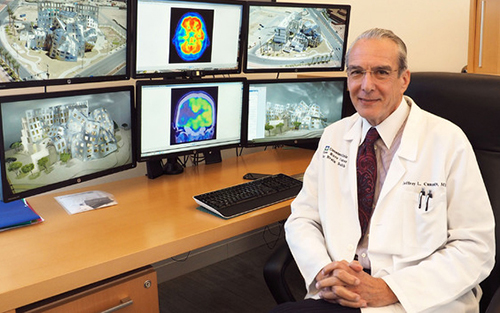Mar 2, 2018 | Instruments & Equipment, Laboratory Instruments & Laboratory Equipment, Laboratory Management and Operations, Laboratory News, Laboratory Operations, Laboratory Pathology, Laboratory Testing, Management & Operations
Liquid biopsy tests hold much promise. But inconsistencies in their findings provoke scrutiny and calls from researchers for further development before they can be considered reliable enough for diagnostic use
Many commercial developers of liquid biopsy tests tout the accuracy and benefits of their diagnostic technology. However, there are an equal number of medical laboratory experts who believe that this technology is not yet reliable enough for clinical use. Critics also point out that these tests are being offered as Laboratory Developed Tests (LDTs), which are internally developed and validated and have not undergone regulatory review.
Dark Daily has published several e-briefings on researchers who have sent the same patient samples to different genetic testing labs and received back materially different test results. Now, a new study by Johns Hopkins University concludes that liquid biopsy technology “must improve” before it should be relied upon for diagnostic and treatment decision making.
‘Certification for Medical Laboratories Must Improve’
Liquid Biopsy is the term for drawing whole blood and looking for cancer/tumor cells circulating in the blood stream. This is one factor in the imprecision of a liquid biopsy. Did the blood sample drawn actually have tumor cells? After all, only a limited number of tumor cells, if present, are in circulation.
Researchers at The James Buchanan Brady Urological Institute at Johns Hopkins School of Medicine know this and recently compared results of two liquid biopsy tests to determine which one would be more beneficial for patients. They published their findings in the December issue of JAMA Oncology.
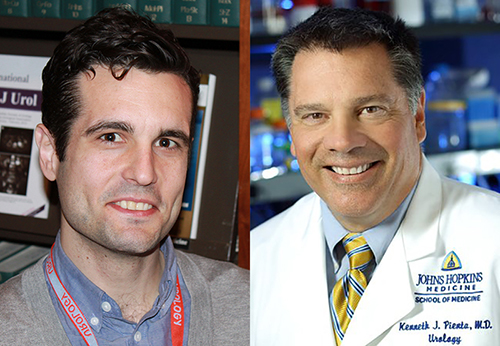
Gonzalo Torga, MD (above left), and Kenneth J. Pienta, MD (above right), are the two Johns Hopkins Medicine doctors who conducted the recent study into the efficacy of liquid biopsy laboratory developed tests (LDTs) offered by different medical laboratory companies. They published their findings in JAMA Oncology. (Photos copyright: Johns Hopkins.)
To perform the study, researchers collected blood samples from 40 patients with metastatic prostate cancer and sent the same patient samples to two different Clinical Laboratory Improvement Amendments (CLIA) licensed College of American Pathologists (CAP) accredited laboratories. The labs then performed DNA next-generation sequencing on the samples following the directions of the two liquid biopsy manufacturers.
In reporting the DNA findings and results from the two medical laboratory companies, researchers discovered that the results completely matched in only three of the 40 patients! The Johns Hopkins researchers are concerned that patients could be prescribed certain cancer treatments based on which lab company’s liquid biopsy test their physician orders, instead of an accurate identification of the unique mutations in their tumors.
“Liquid biopsy is a promising technology, with an exceptional potential to impact our ability to treat patients, but it is a new technology that may need more time and experience to improve,” Gonzalo Torga, MD, Postdoctoral Fellow and Instructor at Johns Hopkins, and the lead author of the study, told Forbes. “We can’t tell from these studies which laboratory’s panel is better, but we can say that certification for these laboratories must improve.”
Unlocking New View of Tumors
Two commercial tests were used for the study:
Guardant360 from Guardant Health, Inc., uses digital sequencing to analyze genomic data points at the single molecular level. It examines 73 genes, including all National Comprehensive Cancer Network (NCCN) listed genes. The test searches for DNA fragments among billions of cells and digitally tags each fragment. This process unlocks a view of tumors that is not seen with tissue biopsies, which helps doctors prescribe the best treatment options for a particular patient.
“As a simple blood test, it provides physicians with a streamlined, cost-effective method to identify genomic alterations that can comprehensively influence a patient’s therapy response,” Helmy Eltoukhy, PhD, co-founder and Chief Executive Officer at Guardant Health, told MDBR.
“The only way of keeping ahead of those diseases and tracking those mutations has been through surgery, through doing a tissue biopsy and physically cutting a piece of the tumor out and sequencing it,” Eltoukhy noted in an interview with Xconomy. “What we’re able to do is essentially get the same, or sometimes better performance to tissue biopsy, but through two teaspoons of blood.”
According to the Guardant Health website, it takes just 14 days for a full report from Guardant360 to reach the ordering physician. In addition, the blood test provides samples with an adequate level of cell-free DNA to test 99.8% of the time and reduces errors and false positives found in standard sequencing methods by 1,000 times. It is common for samples used for tissue sequencing to have insufficient DNA for testing 20% to 40% of the time.
“We believe that conquering cancer is at its core a big data problem, and researchers have been data-starved,” explained Eltoukhy in VentureBeat. “Our launch of the world’s first commercial comprehensive liquid biopsy sparked a boom in cancer data acquisition. Every physician who orders one of our tests, and every patient whose tumor DNA we sequence, adds to this larger mission by improving our understanding of this complex disease.”
PlasmaSELECT-R64, manufactured by Personal Genome Diagnostics (PGDx), evaluates a targeted panel of 64 genes that have biological and functional relevance in making treatment decisions. PGDx announced the expanded version of its PlasmaSELECT assay in March of 2017.
“We are proud to launch the revolutionary PlasmaSELECT 64 expanded assay just six months after we introduced the most accurate, clinically actionable liquid biopsy tumor profiling assay to the market,” said Doug Ward, Chief Executive Officer at PGDx, in a press release. “This update is the first liquid biopsy assay that includes MSI (microsatellite instability) testing as a biomarker for high tumor mutational load, thereby providing cancer patients and their oncologists with information on whether they might be candidates for immuno-oncology therapies. The ability to generate DNA tumor profiling non-invasively using blood or plasma offers many advantages and makes genomic testing more accessible and usable.”
Regulations of LDTs Could be Needed to Improve Liquid Biopsy Tests
There are pathologists and clinical laboratory professionals who believe the technology behind liquid biopsies is not yet reliable enough for clinical use. The tests are being offered as LDTs, which are internally developed and validated, and the Food and Drug Administration (FDA) allows LDTs to be sold without regulatory reviews at this time. However, there are discussions regarding if and how to regulate LDTs, the outcome of which could impact how clinical laboratories are allowed to market the LDTs they develop.
Clearly, liquid biopsies are still in their relatively early stages of development. More testing and evaluation is needed to determine their efficacy. However, their potential to revolutionize cancer detection and care is obvious and a strong motivator for LTD developers, which means there will be future developments worth noting.
—JP Schlingman
Related Information:
Oncologists, Beware: Expensive Liquid Biopsy Tests Produce Conflicting Results
One Patient, Two Cancer DNA Tests, Two Different Results
Liquid Biopsy Results Differed Substantially Between Two Providers
Cancer Screening Firm Guardant Health Raises $360 Million to Sequence Tumor DNA of 1 Million Patients
Guardant Health Launches Guardant360 Blood Test in US
With $100M, Guardant Health to Expand Reach of Blood Test for Cancer
Personal Genome Diagnostics’ Expanded PlasmaSELECT 64 Is First Liquid Biopsy Pan-Cancer Profiling Panel to Include MSI Analyses for Immuno-Oncology
‘Liquid Biopsy’ Picks up Cancer Biomarkers in Blood, Study Finds
FDA Reveals New Approach to Laboratory Developed Tests
Using Extracellular Vesicles, Researchers Highlight Viability of Liquid Biopsies for Cancer Biomarker Detection in Clinical Laboratories
Feb 23, 2018 | Instruments & Equipment, Laboratory Instruments & Laboratory Equipment, Laboratory Management and Operations, Laboratory News, Laboratory Operations, Laboratory Pathology, Laboratory Testing, Management & Operations
Researchers successfully isolated both plant and human RNA and DNA in the field, demonstrating the potential for their new dipstick technology to identify deadly bacteria, pathogens, and diseases in water, food, and even humans
Australian researchers at the University of Queensland (UQ) have developed an intriguing “dipstick” technology that might make it possible to use simple equipment to sequence DNA and RNA in the field. Among the potential applications that will interest clinical laboratory professionals is the ability for this technology to identify pathogens, both in humans and the environment.
Medical laboratories and anatomic pathologists are aware that gene sequencing (AKA, Nucleic Acid Sequencing) is the coming revolution in diagnostics. But the process is still costly and anchored to immovable technology that requires controlled environments and reliable resources. This promising new technology could make it simpler, cheaper, and faster to extract human DNA and RNA in settings outside a sophisticated core medical laboratory.
The UQ researchers developed technology that could affect how and where diagnostic tests for a whole range of pathogens are performed. For example, tests for bacteria such as E. coli in water supplies, pathogens in food, and diseases in humans currently are conducted in environmental and clinical laboratories. This new technology may allow such diagnostics to be done in extremely remote environments.
Isolating DNA/RNA in the Field
Jimmy Botella, PhD, Professor of Plant Biotechnology, and Michael Mason, PhD, Senior Post-doctoral researcher, both at the University of Queensland, led a team of researchers who published their findings in the journal PLOS Biology. The team developed a process they called “dipstick technology,” which allows DNA and RNA to be isolated quickly and without the use of specialized equipment.
They began by using the technology on particular plants, but soon found it could be used in many other situations.
“We found it had much broader implications as it could be used to purify DNA or RNA from human blood, viruses, fungi, and bacterial pathogens from infected plants or animals,” Botella noted in a press release.
The researchers’ objective was to investigate whether or not several different materials could be used to extract nucleic acids. “The first step in any application aiming to amplify DNA or RNA is the extraction of nucleic acids from a complex biological sample; a task traditionally requiring specialized equipment, trained technicians, and multiple liquid handling steps,” they wrote in the published study.
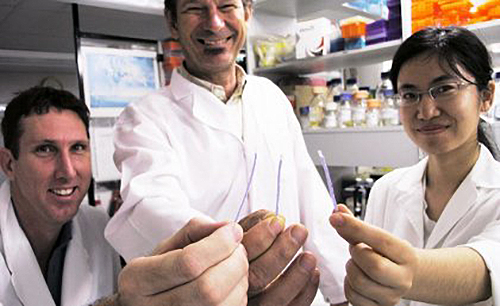
Holding the dipstick technology (from left) Dr. Michael Mason, Professor Jimmy Botella, and Yiping Zhou, all researchers at the University of Queensland in Brisbane, Australia. (Caption and photo copyright: University of Queensland.)
Their aim was to find a simpler process that required far less personnel and equipment. They found that cellulose-based filter paper could be used to bind nucleic acids. The filter paper, which was the control early in their investigation, even retained the nucleic acids through a purification process that removed contaminants. “We then adapted the cellulose filter to create a dipstick that can be used to purify nucleic acids from a wide range of plant, animal, and microbe samples in less than 30 seconds without the need for specialized equipment,” the researchers reported.
The team conducted its first tests on the plant species A. thaliana, a flowering plant found in Africa and Eurasia. However, wanting their dipstick technology to be useful in the field, they expanded their experiments to include various species of wheat, rice, soybean, tomato, and other plants. Citrus plants, known to be challenging, also were successfully tested.
The researchers then tested if their new technology would be useful for applications in humans, which is more complicated. HIV and hepatitis can be diagnosed using commercial kits, but those kits are not useful in many settings because the samples often require sophisticated manipulation. The researchers’ method—using cellulose paper and a one-minute wash—succeeded in amplification of the nucleic acid.
Performing Diagnostics in Hospitals, on Farms, and Even in the Jungle!
The University of Queensland’s commercialization company, UniQuest, has filed a patent application for the new technology. They are currently seeking partners to commercialize and sell the dipstick technology worldwide.
“Our dipsticks, combined with other technologies developed by our group, mean the entire diagnostic process from sample collection to final result could be easily performed in a hospital, farm, hotel room, or even a remote area such as a tropical jungle,” Botella noted in the press release.
The team conducted much of their field research on remote plantations in Papua New Guinea. They conducted tests on trees, livestock, human diseases, and to detect pathogens in food and water. “The dipstick technology makes diagnostics accessible to everyone,” Botella told Technology Networks.
Dipstick Diagnostics Not New to Point-of-Care Testing
As Modern Healthcare Executive noted, dipstick technology for various diagnostic purposes is not new, even though this particular application is, potentially, revolutionary. There are dipstick tests for everything from pregnancy to cholera. Also referred to as point-of-care testing (POCT), research and development of this technology has steadily grown, and as the UQ study shows, will likely continue.
In a paper published in Clinical Biochemistry Reviews, authors Andrew St. John, PhD, of ARC Consulting, and Christopher Price, MD, of the University of Oxford, noted, “Healthcare is changing, partly as a result of economic pressures, and also because of the general recognition that care needs to be less fragmented and more patient-centered.”
While there are certainly advantages to quick diagnostic tests that can be conducted in the field, there are some challenges, as well. Julie L. V. Shaw, PhD, Assistant Professor, Department of Pathology and Laboratory Medicine at The University of Ottawa, argues that “there are many challenges associated with POCT, mainly related to quality assurance,” in a paper she published in the journal Practical Laboratory Testing.
Technology will continue to develop and drive innovation and change in how diagnostics are performed and thus in how clinical laboratories operate. Various initiatives driving the industry toward personalized medicine and value-based care are sure to play a role, alongside new technology and other advancements.
With all of those changes, one thing remains critically important and that is the value of human understanding and innovation.
—Jillia Schlingman
Related Information:
Nucleic Acid Purification from Plants, Animals and Microbes in Under 30 Seconds
UQ Dipstick Technology Could Revolutionize Disease Diagnosis
Dipstick Technology Enables Rapid Diagnosis Anywhere
Existing and Emerging Technologies for Point-of-Care Testing
Practical Challenges Related to Point of Care Testing
The March of Technology Through the Clinical Laboratory and Beyond
